
Interventions in the Area of Design and Consulting

Construction project consisting of corrective measures for the stabilization of the plinth of the Valmayor dam (Madrid) and technical assistance for the study of its structural stability.
Geoprob / Canal de Isabel II
The challenge
The slenderness of the plinths of concrete face rockfill dams, designed in the 1970s and 1980s, has proven to be a problem. The plinths of the Valmayor dam also have two unique characteristics: at their lowest area they are supported on the pre-existing cofferdam and the thickness of the gables is quite asymmetrical.
Our objective has been to define and calculate corrective measures of a structural nature to improve the stability of the dam, taking into account the mentioned characteristics.
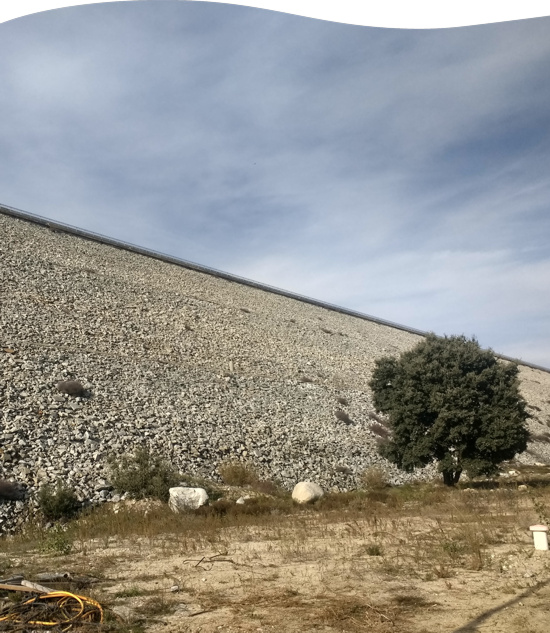
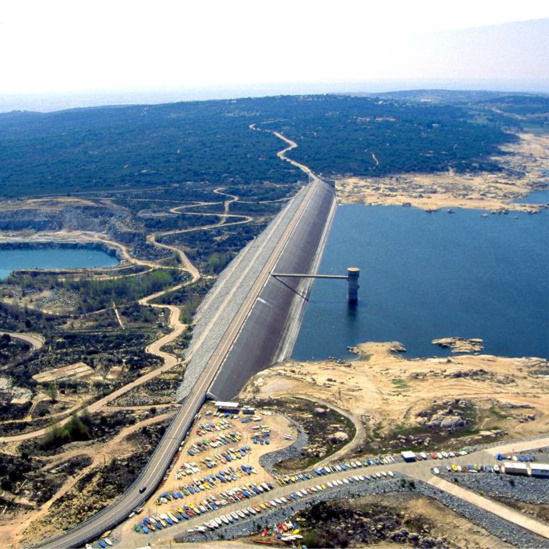
What did we do?
We analyzed the auscultation data of the dam using artificial intelligence techniques (machine learning) in order to improve the interpretation of the problems encountered.
In addition, we evaluated the behavior of the plinth and the improvement that the studied measures have on its twists and movements through non-linear numerical modeling. We analyzed two possible alternatives:
- Monolithic model, in which the filling of the reservoir produces cracking (due to the depletion of the concrete’s tensile strength).
- Model with a joint between concretes (cofferdam and plinth gallery), which allows for both sliding with friction between them as well as their separation or detachment
Finally, we defined the construction procedure for the adopted solution, while maintaining the reservoir operational.
Technical assistance for the supervision of the projects for two HCR dams in the Hatta hydroelectric system (Dubai, United Arab Emirates).
Jouzy Consulting Engineers
The challenge
DEWA (Dubai Electricity and Water Authority) is currently developing a pumped-storage hydroelectric plant, located in the Hajar mountains, near the city of Hatta, south of Dubai.
This project is the first of its kind in the Persian Gulf, with a total capacity of 250 MW.
The project components include two dams, the power intake, the pressure tunnel, the pipeline and the powerhouse, as well as new access roads to allow entry to the plant, which in turn also include two access tunnels.
In a country with no background or specific legislation on dams, the design and execution of two large 38 and 71 m dams on foundations represents a true challenge.
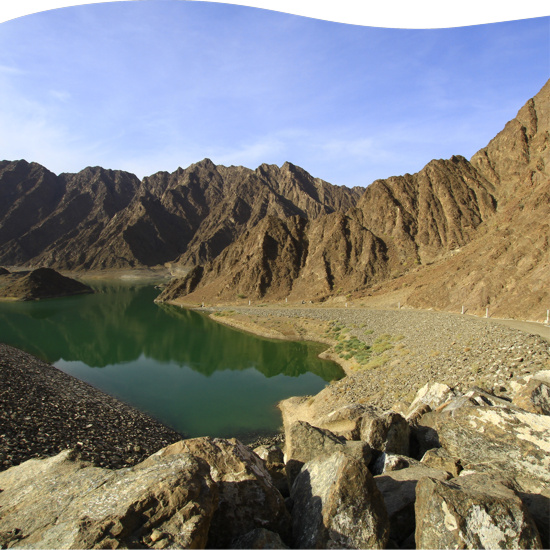
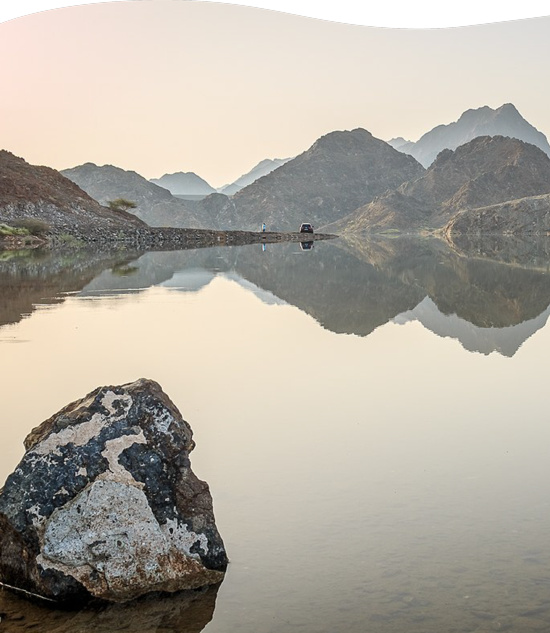
What did we do?
Thanks to our team’s extensive experience and the specialist advice from the Polytechnic University of Madrid in dam engineering, we supervised the drafting of the construction projects for both HCR dams and that define the Upper Reservoir in the Hatta Hydroelectric System (Dubai): the Main Dam and Saddle Dam.
Special emphasis has been placed on the study of dam solutions, as well as on geological/geotechnical studies, their final design and the use of finite-element calculations.
Analysis of the impact of climate change on water resources and hydroelectric potential in the Lunsemfwa and Mulungushi basins (Zambia).
Agua Imara ACA Pte. Ltd. (SN Power)
The challenge
Evaluate the available water resources and the potential for hydroelectric energy production for the Mulungushi and Lunsemfwa hydroelectric schemes in the near future, motivated by concerns about a possible reduction in the available flow due to the non-stationary hydrological behavior of the basins and the increasing upstream extractions from both plants.
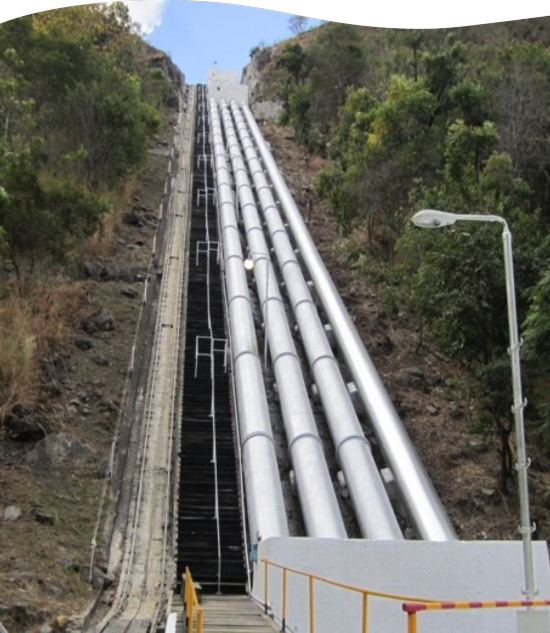
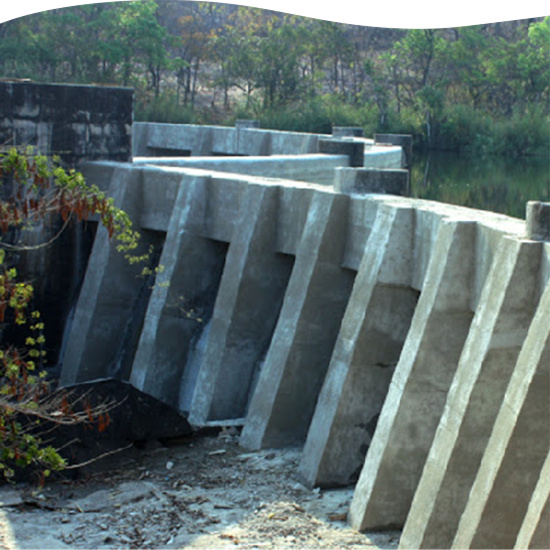
What did we do?
At ACIS2in, we collaborated with professors Álvaro Sordo and Luis Garrote from the Hydro-Informatics and Water Management Group of the Polytechnic University of Madrid, both highly prestigious specialists in this field.
In the first phase, we carried out a hydrological assessment of the Mulungushi and Lunsemfwa hydroelectric schemes based on the compilation of the most relevant information available on the hydrology of the basins contributing to both hydroelectric schemes, as well as the area, currently irrigated upstream, and future monthly contributions.
In addition, we made a generation estimation for the hydroelectric schemes with the development of two models; one to estimate upstream withdrawals representing small-scale storage and another to simulate reservoir operation and estimate hydroelectric production at both hydroelectric plants.
Finally, we evaluated future hydroelectric production in five scenarios regarding expected developments in the demand for irrigation.
Construction project for the remaining work on the dam over the Las Cuevas Stream in Castrejón de la Peña, Palencia.
Regional Government of Castile y León
The challenge
Redesign and develop a cost-effective solution, compatible with the full functionality and use of the work already carried out, to complete the project tendered and awarded in 2007 and which, due to significant problems from the onset, was put on hold in November 2014.
The work, aimed at constructing a 56.6 meter embankment dam on a foundation for the creation of an irrigation reservoir with a capacity of 10.9 hm3, came to a standstill with the partially executed concrete structures of the dam, the gallery of the drain at the base and the spillway.
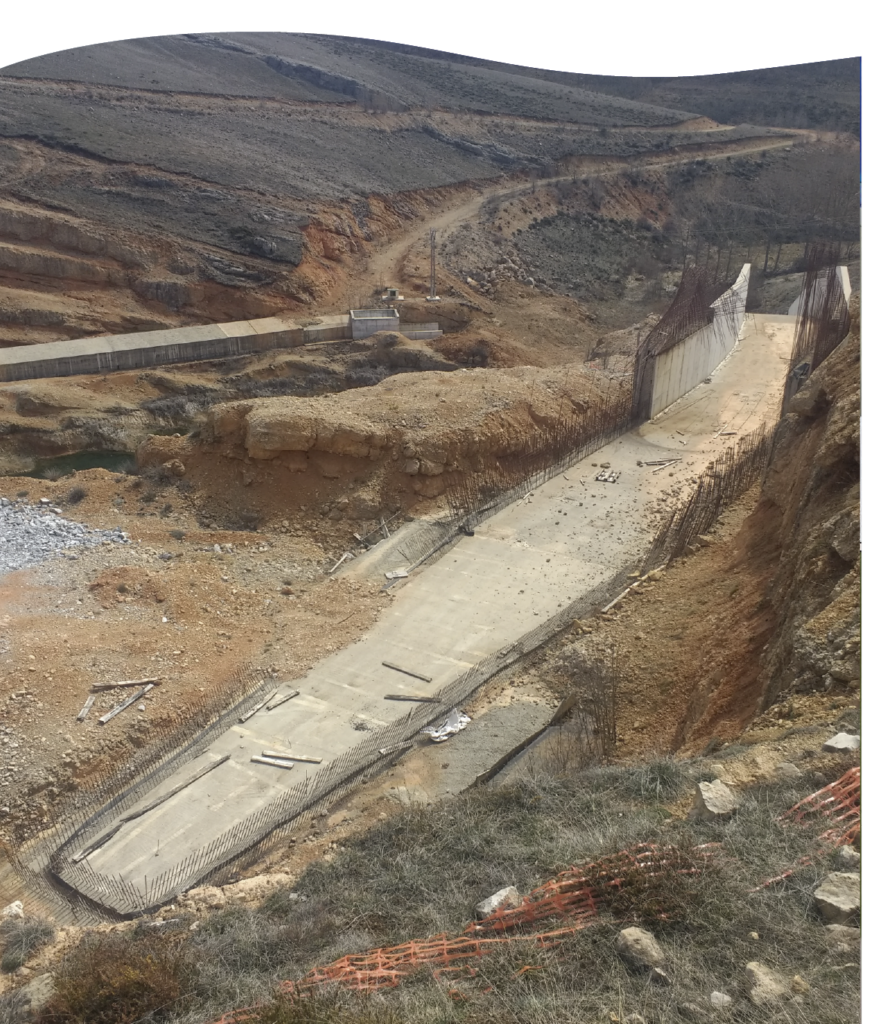
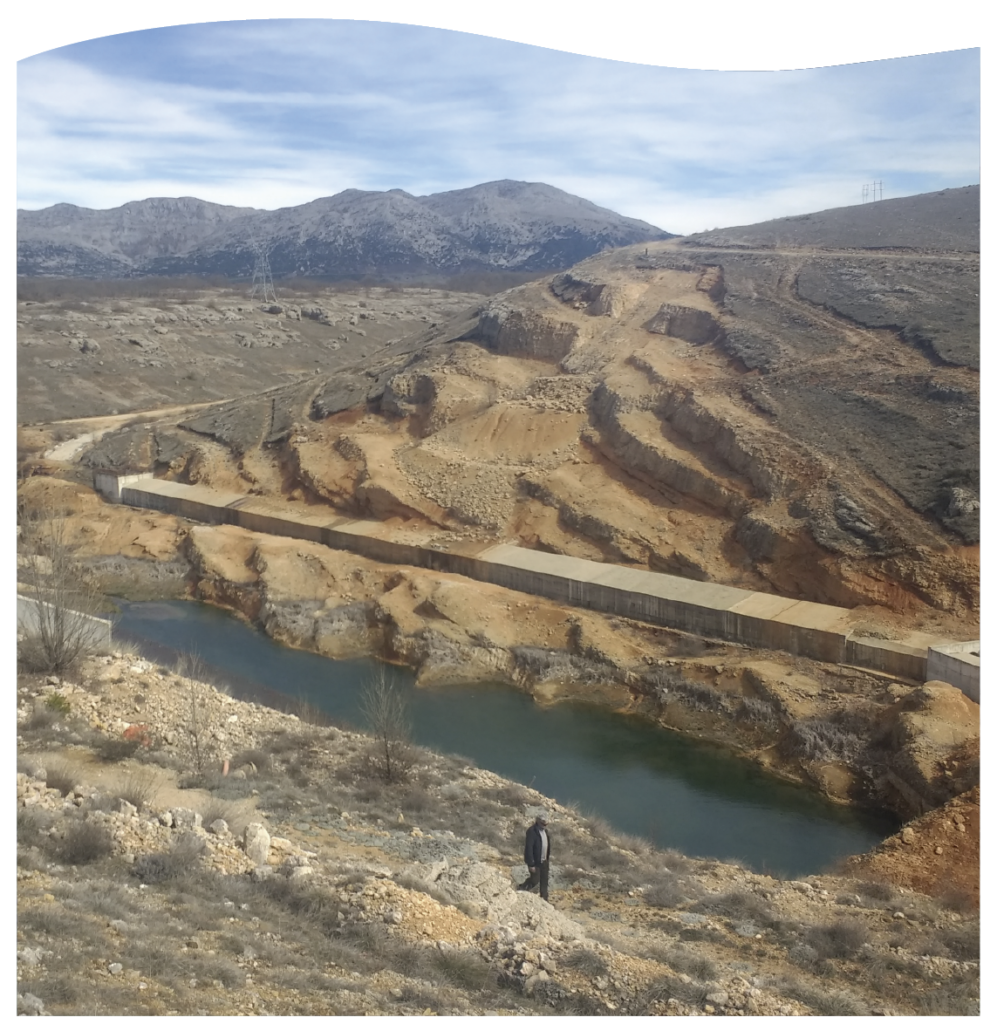
What did we do?
During 2019, at ACIS2in we defined the supplementary work with the intention of better understanding the current situation of the construction work and the geology of the area, as these are the most relevant conditions when defining the most technically appropriate option for completing the project.
As part of the geological/geotechnical work and in order to complete the previous studies (from 2002, 2013 and 2015), we coordinated the execution of a new and important sampling and testing campaign that confirmed both the impermeability and water tightness of the reservoir as well as the characteristics of the borrow material areas. In addition, we located two new borrow areas for the waterproof material, closer than those previously defined.
We opted for an embankment dam with a homogeneous cross section, maintaining the solution originally envisaged in the initial project and adjusting the embankments of the dam to the materials actually available.
Taking full advantage of the available work, we decided what type of spillway to use, as well as its layout and length of discharge, taking into account hydrological, topographic, geological and functional aspects.
For the drain at the base and outlet, the existing gallery was also taken advantage of, redefining the conceptual design of the outlet and the drain.
